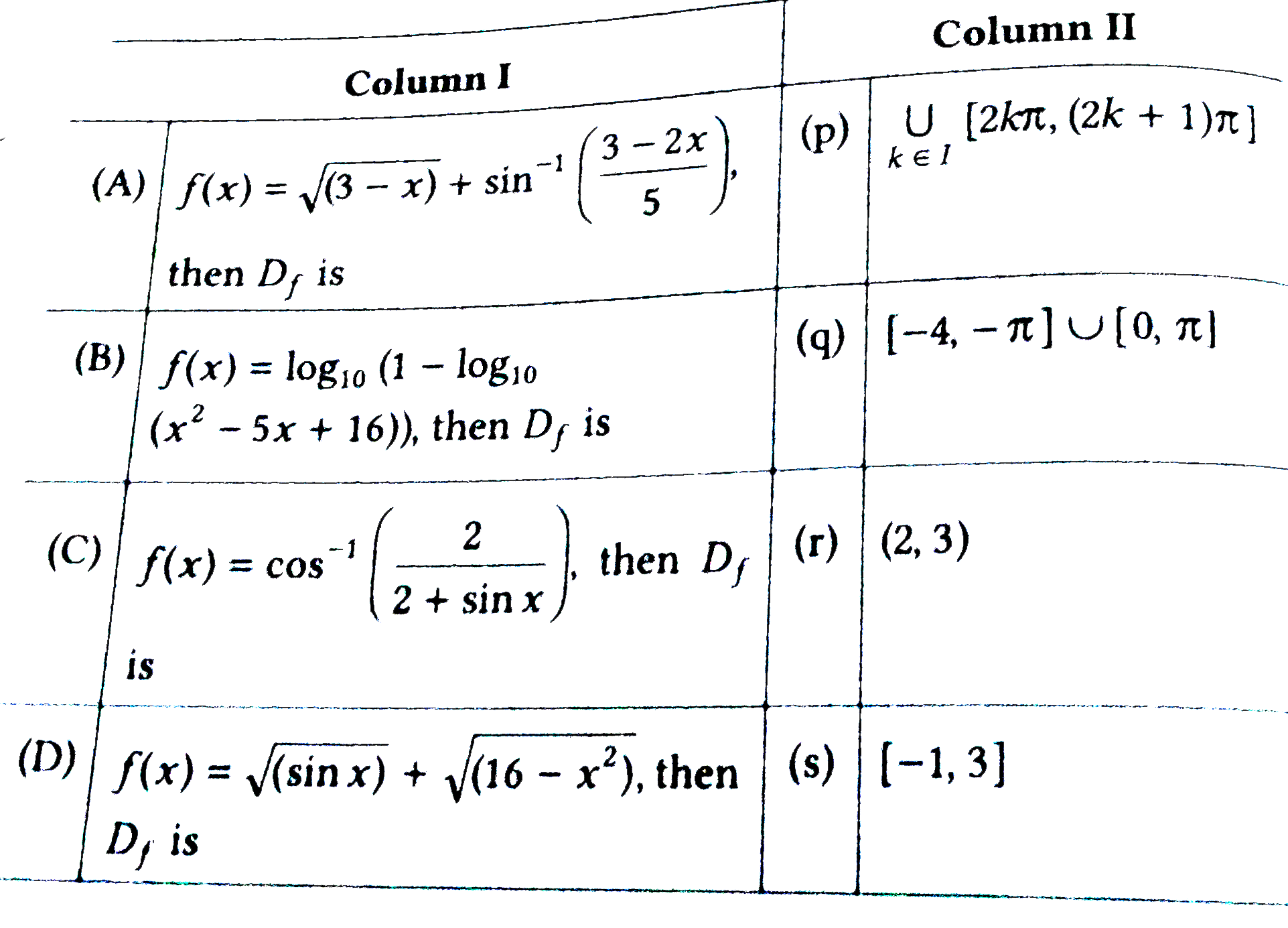Let f:D→R, where D is the domain off. Find the inverse of f(x)=1−2−x
The correct Answer is:f−1 does not exists
To find the inverse of the function f(x)=1−2−x, we will follow these steps:
Step 1: Set the function equal to y
Let y=f(x):
y=1−2−x
Step 2: Swap x and y
To find the inverse, we need to express x in terms of y. So we swap x and y:
x=1−2−y
Step 3: Rearrange the equation to isolate 2−y
Rearranging the equation gives:
2−y=1−x
Step 4: Rewrite 2−y in terms of positive exponent
Taking the reciprocal, we have:
12y=1−x
Step 5: Multiply both sides by 2y
This leads to:
1=(1−x)⋅2y
Step 6: Isolate 2y
Rearranging gives:
2y=11−x
Step 7: Take the logarithm of both sides
Taking the logarithm (base 2) of both sides:
y=log2(11−x)
Step 8: Write the inverse function
Thus, we can express the inverse function f−1(x) as:
f−1(x)=log2(11−x)
Final Answer
The inverse of the function f(x)=1−2−x is:
f−1(x)=log2(11−x)
---
Let y=f(x):
y=1−2−x
To find the inverse, we need to express x in terms of y. So we swap x and y:
x=1−2−y
Rearranging the equation gives:
2−y=1−x
Taking the reciprocal, we have:
12y=1−x
This leads to:
1=(1−x)⋅2y
Rearranging gives:
2y=11−x
Taking the logarithm (base 2) of both sides:
y=log2(11−x)
Thus, we can express the inverse function f−1(x) as:
f−1(x)=log2(11−x)
The inverse of the function f(x)=1−2−x is:
f−1(x)=log2(11−x)
Topper's Solved these Questions
- RELATION, FUNCTION & ITFBOOK - RESONANCE ENGLISHCHAPTER - RELATION, FUNCTION & ITFEXERCISE - SCQ_TYPE
96 Videos
- RELATION, FUNCTION & ITFBOOK - RESONANCE ENGLISHCHAPTER - RELATION, FUNCTION & ITFEXERCISE - MATCH THE COLUMN
2 Videos
- RELATION, FUNCTION & ITFBOOK - RESONANCE ENGLISHCHAPTER - RELATION, FUNCTION & ITFEXERCISE - SSP
55 Videos
- NUMBER THEORYBOOK - RESONANCE ENGLISHCHAPTER - NUMBER THEORYEXERCISE - Exercise -2 (PART - II)
4 Videos
- SEQUENCE & SERIES BOOK - RESONANCE ENGLISHCHAPTER - SEQUENCE & SERIES EXERCISE - EXERCISE -2 (PART-II : PREVIOUSLY ASKED QUESTION OF RMO)
3 Videos
Similar Questions
Let f:D→R, where D is the domain of f. Find the inverse of f if it exists: f(x)=ln(x+√1+x2)
View SolutionLet f:D→R, where D is the domain of f. Find the inverse of f if it exists:
Let f:[0,3]→[1,13] is defined by f(x)=x2+x+1, then find f−1(x).
View SolutionLet f:D→R, where D is the domain of f. Find the inverse of f if it exists: f(x)=(4−(x−7)3)1/5
View SolutionLet f:N→Rbe a function defined as f(x)=4x2+12x+15. Show that f:N→S, where, S is the range of f, is invertible. Find the inverse of f.
View SolutionLet f:N→R be a function defined as f(x)=4x2+12x+15. Show that f:N→S, where S is the range of f is invertible. Also find the inverse of f
View SolutionLet f:N→R be a function defined as f(x)=4x2+12x+15. Show that f:N→S, where S is the range of f, is invertible. Also find the inverse of f
View SolutionLet f:N→N be a function defined as f(x)=4x2+12x+15 is invertible (where S is range of f). Find the inverse of f and hence find f−1(31).
View SolutionLet h(x)=|kx+5|,then domainof f(x) be [-5,7], the domain of f(h(x)) be[−6,1],and the range of h(x) be the same as the domain of f(x). Then the value of k is. (a)1 (b) 2 (c) 3 (d) 4
View SolutionThe domain of the function f(x) is denoted by Df

View SolutionShow that f:[−1,1]→R, given by f(x)=x(x+2)is one- one . Find the inverse of the function f:[−1,1]→SwhereSistheRan≥off.
View Solution